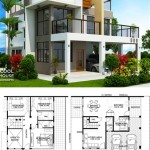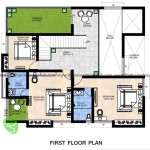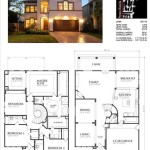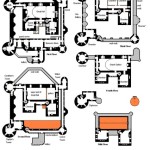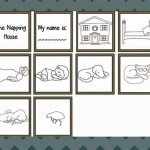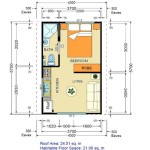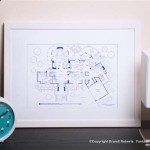Exploring the World of House Plan Images: A Comprehensive Guide
The visual representation of a house plan, often presented as images, serves as a crucial bridge between abstract architectural designs and tangible building possibilities. These images offer a clear and accessible way to understand spatial layouts, design aesthetics, and overall functionality, allowing prospective homeowners, builders, and architects to effectively communicate and collaborate on a construction project. Understanding the different types of house plan images, their purposes, and how to interpret them is essential for anyone involved in the process of designing or building a home.
House plan images go beyond simple floor plans. They encompass a diverse range of visuals, including elevations, sections, 3D renderings, and site plans. Each type of image provides a unique perspective and level of detail, contributing to a comprehensive understanding of the proposed dwelling. The availability and quality of these images can significantly impact decision-making, cost estimations, and the overall success of a building project. This article aims to provide a detailed exploration of house plan images, covering their various types, their significance, and practical considerations for their use.
Understanding Different Types of House Plan Images
The term "house plan image" is an umbrella term encompassing several distinct visual representations of a building design. Each of these images serves a specific purpose and highlights different aspects of the proposed structure. Proficiency in recognizing and interpreting these various image types is essential for effectively engaging with house plans.
Floor Plans: These are arguably the most fundamental house plan images. Floor plans are top-down views of each level of the house, illustrating the arrangement of rooms, hallways, doors, windows, and other features. They typically include dimensions, wall thicknesses, and the location of fixtures and appliances. Floor plans are crucial for understanding the spatial relationships within the house and assessing the flow of movement between different areas. They are essential for space planning and furniture placement.
Elevations: Elevations are orthographic projections that show the exterior appearance of the house from each side (front, rear, left, and right). They depict the vertical dimensions, window and door placement, rooflines, and exterior materials. Elevations provide a visual representation of the building's façade and its overall style. They are critical for visualizing the architectural aesthetic and ensuring compliance with local building codes and design guidelines pertaining to exterior appearance.
Sections: Section drawings are vertical cuts through the house, revealing the interior construction details, such as wall framing, floor joists, roof structure, and insulation. They illustrate the relationships between different levels and the vertical dimensions of rooms. Sections are particularly useful for understanding the structural integrity of the building and the integration of various building systems. They are essential for coordinating the work of different trades and ensuring the building meets structural and energy efficiency requirements.
3D Renderings: These are computer-generated images that provide a realistic view of the house from various perspectives. They often incorporate lighting, landscaping, and furniture to give a sense of the completed project. 3D renderings are powerful tools for visualizing the final product and communicating the design to clients or stakeholders who may not be familiar with architectural drawings. They can also be used to experiment with different design options and make informed decisions about materials and finishes.
Site Plans: Site plans depict the house's location on the property, showing its relationship to property lines, setbacks, easements, driveways, walkways, landscaping, and other site features. They include information about the topography, drainage, and existing utilities. Site plans are crucial for ensuring compliance with zoning regulations and for coordinating the construction of the house with the surrounding environment. They are essential for planning the site layout, grading, and landscaping.
The Significance of High-Quality House Plan Images
The quality of house plan images significantly impacts their effectiveness as communication tools and their ability to support informed decision-making throughout the building process. High-quality images are clear, accurate, and detailed, providing a comprehensive understanding of the proposed design. Conversely, poor-quality images can lead to confusion, misinterpretations, and costly errors.
Enhanced Communication: Clear and well-presented images facilitate effective communication between architects, builders, homeowners, and other stakeholders. They minimize ambiguity and ensure that everyone is on the same page regarding the design intent. Visual representations are often more easily understood than complex technical drawings, making it easier for non-professionals to grasp the details of the house plan.
Improved Decision-Making: High-quality images enable informed decision-making by providing a realistic view of the proposed house. Homeowners can use 3D renderings to visualize the finished product and make informed choices about materials, colors, and finishes. Builders can use detailed floor plans and sections to accurately estimate costs and plan the construction process. Architects can use elevations to ensure that the design meets aesthetic and functional requirements. This informed decision-making leads to better overall project outcomes and reduced risks of costly changes later in the construction phase.
Reduced Errors and Misunderstandings: Accurate and detailed images minimize the risk of errors and misunderstandings during the construction process. Clear floor plans ensure that walls are built in the correct locations and that doors and windows are properly placed. Detailed sections prevent structural mistakes by clearly showing how different building components are connected. By reducing the potential for errors, high-quality images can save time and money, and ensure that the finished house meets the intended design specifications.
Effective Marketing and Sales: For developers and builders, high-quality house plan images are essential for marketing and sales. Attractive 3D renderings and virtual tours can entice potential buyers and help them visualize themselves living in the house. Clear and informative floor plans and elevations can showcase the layout and design of the house, highlighting its key features and benefits. High-quality images can significantly improve the marketability of a house and increase its chances of being sold quickly and at a premium price.
Practical Considerations for Using House Plan Images
Effectively using house plan images requires careful consideration of several practical factors, including image resolution, file format, scale, and annotation. Understanding these considerations can enhance the usability and effectiveness of house plan images for various applications.
Image Resolution and Clarity: The resolution of a house plan image determines its level of detail and clarity. Higher-resolution images provide greater detail and are less prone to pixelation when zoomed in. For printing or displaying on large screens, high-resolution images are essential. However, high-resolution images also require more storage space and can be slower to load and process. Choosing the appropriate resolution depends on the intended use of the image and the available resources.
File Format Compatibility: House plan images are available in various file formats, including JPEG, PNG, PDF, and DWG. JPEG is a common format for photographs and renderings, but it can result in some loss of quality due to compression. PNG is a lossless format that is ideal for images with sharp lines and text. PDF is a versatile format that can combine images, text, and vector graphics. DWG is a CAD format used for storing architectural drawings. Choosing the appropriate file format depends on the type of image and the software used to view or edit it.
Scale and Dimensions: House plan images should always be drawn to a specific scale, which indicates the relationship between the dimensions on the drawing and the actual dimensions of the house. The scale is typically indicated on the drawing, for example, "1/4 inch = 1 foot." Understanding the scale is essential for accurately interpreting the dimensions of rooms, walls, and other features. It's crucial to ensure that the scale is consistent throughout the entire set of drawings to avoid errors. In digital formats, ensure accurate scaling is maintained when printing or exporting the images.
Annotation and Labeling: Clear and concise annotation is essential for making house plan images easy to understand. Labels should be used to identify rooms, features, and materials. Dimensions should be clearly indicated and easy to read. Symbols and legends should be used to explain the meaning of different graphical elements. Effective annotation can significantly improve the usability of house plan images and reduce the risk of misunderstandings.
Accessibility and Sharing: Consider how the house plan images will be accessed and shared. For online viewing, images should be optimized for web use to ensure fast loading times. For printing, images should be formatted to fit standard paper sizes. For sharing with collaborators, choose a file format that is widely compatible and easy to use. Using cloud-based storage or project management tools can facilitate easy access and collaboration on house plan images.
By carefully considering these practical factors, it is possible to maximize the effectiveness of house plan images and ensure that they serve as valuable tools for communication, decision-making, and project management throughout the building process.

Peach Tree House Plan Ranch Floor Designs

Simple 3 Room House Plan Pictures 4 Nethouseplans Building Plans Designs With Bungalow Floor

House Plans How To Design Your Home Plan

Vatican Mansion Floor Plans Two Story

Where You Can Buy House Plans Live Home 3d

Floor Plans Types Symbols Examples

Small House Plans With Pictures Houseplans Blog Com

House Plan Maywood Sater Design Collection

Unique One Story House Plans Monster

Humber House Mansion Plans Luxury

